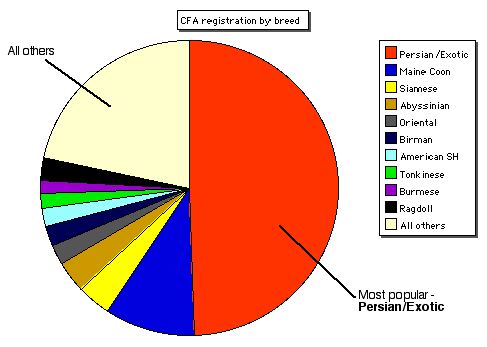Information about cats wouldn’t be complete without asking some basic questions. Before I do though you might like to read about animal trivia, which has some nice cat-stats.
What is the origin of the domestic cat?
Wildcats are formed of 5 sub-species (see below). Of these 5 sub-species, recent analysis of DNA tells us that the domestic cat is a domesticated version of the Near Eastern wildcat (Felix silvestris lybica).
The earliest evidence of domestication was found in a 9,500 year old grave in Cyprus, where a cat was buried next to a human. The wild cat had “come in from the cold” to eat rodents infesting the grain stores of humans and a mutually beneficial arrangement began.

Scientific Classification:
The domestic cat was named Felis catus by Carolus Linnaeus in his Systema Naturae of 1758. Johann Christian Daniel von Schreber named the Wildcat Felis silvestris in 1775.
The International Commission on Zoological Nomenclature confirmed in 2003 Felis silvestris for the wildcat and Felis silvestris catus for the domestic cat.

What is the current position regarding the domestic cat?
Information about cats briefly looks at humans’ impact on the cat. As an example, the wildcat has almost been eradicated from the UK by humans. The wildcat found sanctuary in Scotland where there are now 400 left (at 2007). The number of domestic cats in the UK is estimated to be about 7.7 million. There are an estimated 100m in the Western World and 500m worldwide.
Once the wildcat became domesticated things changed for the domestic cat over the intervening 9,500 years. Humans like the appearance of things. The appearance of things is important to humans. Humans also like to classify things and possess things.
The result is that humans have breed cat types that they like the look of (to increase their numbers) and to create other cat breeds that they find attractive (and commercially viable).
Which are the major the cat registries?
There are 3 major cat registries, 2 in North America and one in the UK. The Cat Fanciers Association (CFA) is currently the world’s largest registry of pedigreed cats. They recognise 39 breeds.
The International Cat Association (TICA) is the 2nd largest in North America. The Governing Council of the Cat Fancy (GCCF) is the primary governing body of the Cat Fancy in the United Kingdom. (The Federation Internationale Feline is a 4th and is “a leading international cat fancier society”. It is based in Luxembourg).
The popularity of breeds differs from country to country and the number of registrations not only depends on popularity of a breed but whether the registry will register the breed. However, the charts below give a clear indication as to the popularity of a breed.
What is the current position regarding the major cat registries?
Overview:
The CFA is declining in numbers registered – why? Probably due to registration policy. It does not recognise breeds with wild blood (e.g. bengal). TICA takes these so it is growing in numbers registered. Also CFA insists upon mandatory inspections of high volume breeders and it is heavily reliant on persian breed registrations, which are declining.
The TICA has almost doubled size past 10 yrs. Probably due to liberal registration policy which includes supporting new breeds. Cat breeders will like this as they seek new business and new breeds
The GCCF is doing fine and heading towards being dominant cat registry.
The decline in kitten registrations by CFA is compensated by increased registrations by TICA. Analysis of information about cats provided by the main registries allowed the following charts to be made.
2004 registrations by Registry
(I am researching more recent figures)

CFA registrations
2004 (I am still looking for more recent figures)

You can see a list of the CFA breeds by clicking on this link.
GCCF registrations
for 2006 (most recently available)

TICA registrations
for 2005 (most recently available as far as I can see). 
Information about cats relied on the following reference sources:
- The Mammal Society
- The Scottish Wildcat Association
- The Cat Fanciers Association
- Governing Council of the Cat Fancy.
- The Journal Science, through a Times article
- The Federation Internationale Feline
There’s a lot more information about cats on the other pages.
Return from Information about cats to Home page

